What if I told you that the secret to legendary guitarist Yngwie Malmsteen’s explosive sound lies not only in his stellar technique, but the design of his guitar itself? And, more specifically, its scalloped fretboard? As a staunch devotee of all things guitar for over two decades, I was awed to realize how such an often overlooked detail could significantly alter my playing experience.
Scalloped fretboards. To the uninitiated, this might sound like an odd, even obscure, facet of guitar design. Yet, it is this intricate element that has transformed the playability and tone for a swath of seasoned guitarists, myself included. After my first tryst with a guitar bearing such fretwork, my curiosity spiraled, leading me on an exploration of its virtues and shortcomings.”
A scalloped fretboard is akin to a hidden gem, seldom fully understood, but distinctive in its influence – providing a wide range of acoustic possibilities. Exciting, isn’t it? But hold your horses! It’s not all smooth sailing. This seemingly attractive design choice also brings with it its own challenges. I’m here to chronicle this captivating journey onto the less-trodden-path of scalloped fretboards and take you through its palpable impact on a guitar’s playability.
From its perks and pitfalls, to its influence on tone and notable players that endorse it, we’ll delve deep into all these aspects, being as thorough as the scalloped depressions themselves. So, if you’re ready to quench your curiosity, or even considering customizing your own fretboard, get ready to embark on a journey of understanding the fascinating world of scalloped fretboard guitars.
Understanding Scalloped Fretboard
What Is Scalloped Fretboard?

The first time I encountered a scalloped fretboard, I was initially perplexed. What appeared to be numerous divots across the guitar’s neck seemed like a manufacturing flaw. It wasn’t until I picked up the instrument and strummed a few chords that I understood its purpose.
A scalloped fretboard, in simple terms, is a guitar fretboard where wood is carved out from the areas between the frets. This results in a “scalloped” appearance, resembling the edge of a scallop shell. The main idea of creating such a design is to allow guitarists to exert more control over their playing, specifically in terms of bending notes and vibrato. The grooves from the scalloping provide an area for the fingers to grasp, resulting in an enhanced level of sensitivity, contributing significantly to the guitar’s playability.
My hands-on experience with a scalloped fretboard remarkably changed my opinion. The sensitivity, the control, and the near-seamless playability of these guitars made me appreciate the extraordinary craftsmanship behind it. In many ways, it challenged and redefined my understanding of guitar anatomy—highlighting that the fretboard is more than just a static platform for the strings. It can be engineered to mutate and enhance the player’s touch and control.
Examining the scalloped fretboard within the broader guitar world, it’s clear it has influenced countless professionals. Each one adds a unique flavor, character, and dynamism to their music, challenging traditional guitar playing norms. This innovative design change personifies the ever-evolving artistic expression through guitars.
How Does It Affect Guitar Tone?
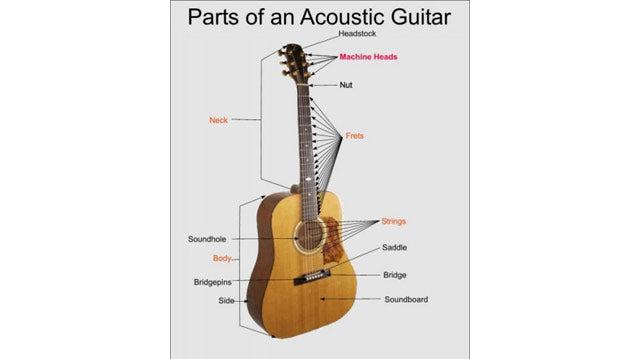
Having dissected the concept of a scalloped fretboard, let’s delve into the intricate and intriguing subject of its affect on the guitar tone. As an experienced player, I found this to be one of the standout features that truly distinguished the character of my scalloped fretboard guitar. A scalloped fretboard amplifies the level of control you exert over the tone, pitch, and resonance of the notes.
I can still recall the distinct sound that my first scalloped fretboard guitar produced. It was an undeniable revelation. An insight into how even the most minute design twists can profoundly impact that unique signature tone of an instrument.
Treating the strings delicately reduces the likelihood of pulling them out of tune, thunderously augmenting the richness and presence of the tone. However, applying excessive pressure can lead to its inverse, causing a harsh, dissonant, off-key sound. Hence, the scalloped fretboard empowers us to shape our desired tonal output, albeit with a high demand for masterful manipulation and restraint.
As we glide towards the pivotal pros and cons of these fretboards, it’s essential to note how such physical interaction with the instrument catalyzes a heightened emotional connection with our music. What was once the stratified domain of traditional lutes and sitars is now a rich tapestry of invention in modern guitars- all thanks to the scalloped fretboards.
Advantages and Disadvantages
Advantages of Scalloped Fretboard
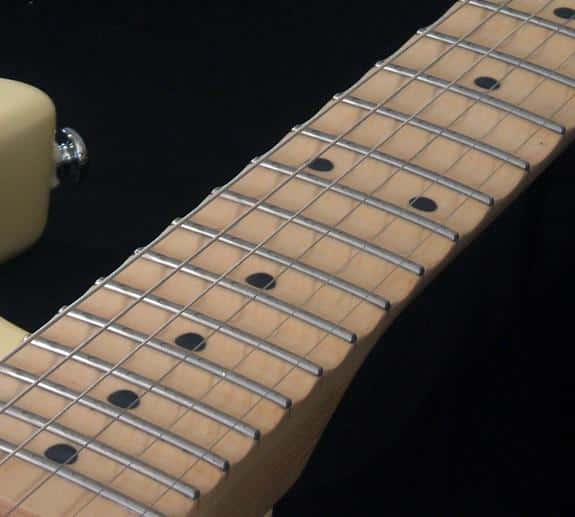
Having delved into the mechanics of scalloped fretboards, I’ve learned over time that these unique constructs convey not just aesthetic appeal but also certain playing benefits. The advantages of scalloped fretboard guitars, in my experience, significantly contribute to enhanced pitch control and allow the development of nuanced playing styles.
When using scalloped fretboards, you’ll notice you can apply a lighter touch because your fingers do not make contact with the wood below the strings. This feature can potentially speed up fretting actions and facilitate quicker playing and faster note sequences.
Perhaps the most noteworthy advantage of scalloped fretboards is the improved ability to control pitch by pressing strings down into the fretboard. This offers the power of vibrato and bending techniques, allowing for greater expressiveness, and emphasizes individual note playing.
Let me emphasize, utilizing a scalloped fretboard helps develop disciplined playing technique. With the fretboard’s wood absent beneath your fingers, it requires you to fret the strings with precision, improving one’s overall finesse and mastery of the instrument.
As we move to the conversely relevant section of disadvantages, let’s remember that these benefits do not come without potential drawbacks. Just as the unique properties of scalloped fretboards can enhance certain techniques, they can also introduce challenges in others. Reviewing these pros and cons should solidify your understanding of this distinctive guitar feature’s impact on playability.
Disadvantages of Scalloped Fretboard
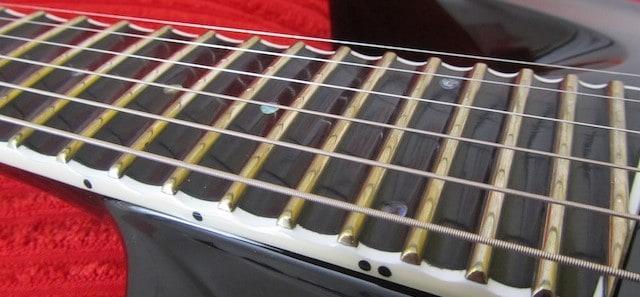
After exploring the benefits of scalloped fretboards, we arrive now at the key disadvantages
, some of which can be challenging for beginners. Sharing from my vast experience with these fretboards, the first hurdle one might face is that it’s easy to press down too hard. This can bend the string’s tone out of pitch, requiring a gentler and more precise touch than a regular fretboard.The second obstacle lies in the seeming absence of a tactile reference point that regular fretboards provide. Without the usual feeling of the wood under your fingers, accuracy might falter. With continued use, however, you’ll develop a sense of how much pressure to apply and your fingers will find their way around the scalloped spaces.
Another noticeable factor is that the scalloping process removes a significant amount of wood. This can potentially affect the guitar’s tonal character, often resulting in a brighter sound that may not be to everyone’s liking. Furthermore, they are not as widely used as regular fretboards, leading to their availability and repair being more expensive.
While these challenges can be daunting, particularly for novice players, the disadvantages of the scalloped fretboard are surmountable over time with consistent practice. Some guitarists find that mastering a scalloped fretboard has helped them develop superior tactics that benefit their playing on all types of guitars.
Impact on Playability
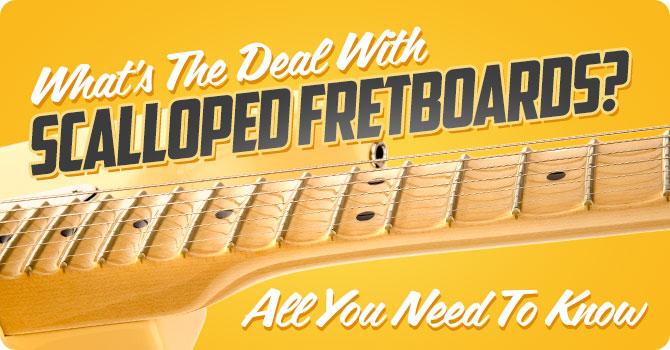
As a passionate guitar player and an experienced luthier, the heart of my interest and my inquiries lies in guitar playability, a key factor that defines the usefulness of a guitar. The ease or difficulty of playing a certain guitar, after all, significantly impacts a musician’s performance and expression. It’s from this perspective that I delve into the distinct niche of scalloped fretboard guitars.
In the midst of the myriad, complex dynamics at play in music execution, one question surfaces prominently: Do scalloped-fretboard guitars offer a distinct advantage or a challenge in terms of playability? Let’s find out.
I’ve had my fair share of encounters with guitars of this variant. Each instance invariably ushered in a unique blend of challenge and reward. On one hand, the scalloped design facilitates certain techniques, like vibrato and bending. The physical space created by carving wood between the frets enables the fingers to grip the strings more effectively. This is particularly advantageous in executing the guitar bending technique, where the strings are pushed or pulled across the fretboard to alter the pitch. With the scalloped fretboard, the technique becomes smoother and you achieve a wider pitch variation.
On the other side of the spectrum, however, the scalloped fretboard can pose an unexpected obstacle. The absence of fretboard wood under your fingertips requires a delicate, almost feather-light touch. Press too hard, and you risk pushing a note out of tune. This distinctive characteristic means that these guitars demand a well-controlled fretting hand: a potential challenge for beginners, but a positive stimulus for experienced guitarists.
The crux of the matter rest on these scales: The scalloped fretboard heightens the expressiveness of your play, but it also demands a refined technique. So, does it present an advantage or a challenge? The answer, I find, hinges on your playing style, skill level, and willingness to explore and adapt.
To conclude this section, in my personal experience and professional understanding, the impact scalloped fretboards have on playability is substantial and twofold. They foster certain techniques, elevate expressive potential, yet demand a nuance of touch. In the grand scheme of a musician’s journey, these peculiar guitars offer both great asset and an intriguing challenge; a testament to the multi-layered world of music that we, as luthiers and musicians, continue to explore.
Notable Scalloped Fretboard Guitars & Players
Notable Guitars
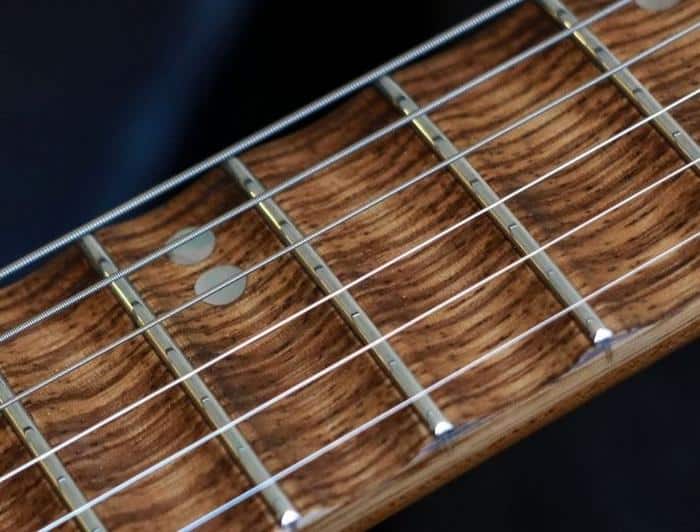
As a professional luthier and a seasoned player, I’ve wielded countless notable guitars. However, it is the Fender Malmsteen model and the Ritchie Blackmore Stratocaster that particularly stand out. These dazzling pieces are among the iconic representatives of scalloped fretboard guitars, and their remarkable relevance within this category warrants a special mention.
The Fender Malmsteen, named after the legendary Swedish guitarist Yngwie Malmsteen, provides a unique playability advantage, thanks to its eloquently scalloped fretboard. This model is designed for speed, precision, and enhanced vibrato – attributes borne out of Malmsteen’s neoclassical metal style. What has always ensnared me most is how it facilitates a lighter touch, leading to lessened player fatigue and perkier performances.
Then, there’s the Ritchie Blackmore Stratocaster. Blackmore, widely celebrated for his work with Deep Purple and Rainbow, was one of the earliest exponents of the scalloped fretboard. This Stratocaster model, inspired by his preferences, offers a unique blend of vintage aesthetics and modern playability. Its scalloped frets enable delicate note-bending maneuvers, quite similar to a sitar, while preserving a rock-solid, low action for chugging rhythms – a key factor in Blackmore’s style.
Both of these guitars have significantly contributed to broadening the horizons for scalloped fretboard players, offering a captivating amalgam of tone, playability, and distinctiveness.
Having personally experienced their magic and understanding them inside out, I maintain that these notable pieces symbolize the progressive evolution of the guitar as a versatile instrument.
Famous Players
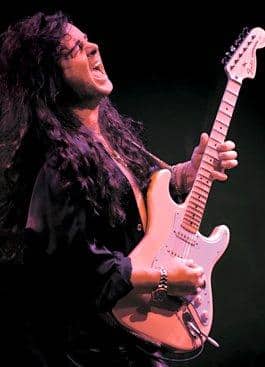
In understanding the complexity and prowess of the scalloped fretboard, it’s enlightening to reflect on the impacts and journeys of its most esteemed users. Yngwie Malmsteen, for example, is a prime example of how the scalloped fretboard can shape an artist’s technique and style. This Swedish maestro, known for his dexterity and precision, would be incomplete without his trademark scalloped Stratocaster.
Malmsteen’s work showcased the potential of the scalloped fretboard, a tool that can bring new dimensions to even the most complex musical compositions. Yet, handling such a guitar isn’t an easy feat, but one that requires expert touch and control.
That challenge hasn’t stopped other musicians from following in his trail. Intrigued by the tactile feel and different play style, notable scalloped fretboard players like Ritchie Blackmore and John McLaughlin too found artistic breakthroughs through these unconventional instruments.
Moving forward, the unique possibilities of the scalloped fretboard continue to inspire players worldwide. The impact made on both technique and compositions by these famous players is a testament to the scalloped fretboard’s influence and potential. Truly, their mastery of this tool has significantly shaped how we perceive the possibilities within the realm of guitar music.
As we delve deeper into customizing your own guitar, let’s keep in mind these virtuosos’ artistic journeys and the lessons they offer. Mastery, after all, lies in understanding and adapting to the unique demands of one’s instrument— including the scalloped fretboard.
Customizing Your Guitar
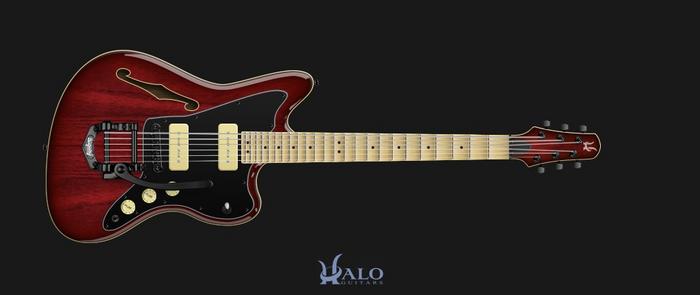
As we’ve discussed, scalloped fretboards offer a unique playing experience that can’t be replicated by other setups. But what you must also realize is that the world of guitar customization extends way beyond scalloped fretboards. With the right touch of customization, your guitar can morph from a standard instrument into a profound expression of your musical soul.
The concept of guitar customization isn’t new. Luthiers have been shaping and modifying guitars to suit their artists’ preferences for generations. You’ll find a tonne of custom shop guitars, each with its distinct design and sound, a testament to the diverse possibilities of customization.
Do you want your guitar to scream individuality and personalization? Let’s explore the myriad ways you can customize your instruments, including scalloped fretboards.
Throughout my career, I’ve always encouraged players to explore customization options. Be it my students or fellow luthiers, I emphasize that an instrument can truly become an extension of oneself through thoughtful customizations. I’ve seen first hand, the profound impact personal touches can have on both the comfort, playability, and ultimately the music one creates.
Let’s consider scalloped fretboards. The deeply carved grooves allow for a unique feel under your fingertips, offering increased control and a faster response. But it’s not just about the technical advantages. The scalloped fretboard will create a distinctive aesthetic, setting your guitar apart from the crowd. This is the beauty of customizing your guitar – it’s equally about enhancing your playability and expressing your individuality.
Beyond the fretboard, modification options are nearly limitless. Maybe you prefer a specific set-up of pickups for that elusive tone you’ve been chasing. Or perhaps, you’ve always dreamt of a unique shape – your guitar doesn’t have to be the standard size or form if it doesn’t suit your style or comfort. The materials used in construction, the finish, the hardware, all these variables can be tailored to your liking.
Guitar customization is equally about exploring the untapped reserve of your creativity as it is about refining your guitar skills. Guitars personalized to your touch, feel, and hearing can facilitate a deeper connection with your instrument, and ultimately contribute towards achieving a more authentic expression of yourself through your music.
In the end, whether you choose to scallop your fretboard or opt for other customizations, remember that your guitar should reflect your personal style and preferences. Customizing your guitar isn’t just about creating that unique sound but encapsulating your musical journey in every note you play.
FAQs
What are scalloped fretboard guitars?
What are the advantages of scalloped fretboard guitars?
What are the disadvantages of scalloped fretboard guitars?
How does a scalloped fretboard impact playability?
Conclusion
Having navigated the vast landscape of scalloped fretboards, are you ready to sail this intriguing ocean of instrument design? As we’ve traversed together from the bare-bones understanding of a scalloped fretboard to detailed analyses of its impact on guitar tone, its benefits and drawbacks, and its influence on playability, the complexities and unique characteristics of this design have unfolded.
This journey has reaffirmed my belief that while a scalloped fretboard may not be everyone’s cup of tea, it holds significant potential for those craving more control over bends, vibrato, and complex fretting techniques. The imprint of its usage across notable guitars and famous players underlines the importance of personal preference and playing style in making this decision.
My exploration with scalloped fretboards has been an enriching experience, helping me grow both as a luthier and a player. I sincerely hope my insights have enhanced your understanding and appreciation for this impressive feat of guitar design. Remember, whether you decide to stick to traditional fretboards or plunge into the realm of scalloped ones, it is your unique musical voyage. Don’t let prescribed definitions limit your creativity or hinder your path to musical innovation.
